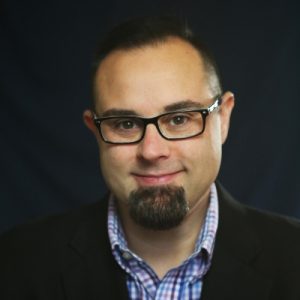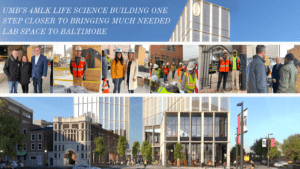
The Journey To Commercialization for a Novel Medical Device Startup: Q&A with Sonavex CEO, David Narrow
May 7, 2019
In the past year Sonavex has landed not one, but two FDA 510(k) clearances for their ultrasound-based medical devices. This first of its kind solution is comprised of two components, EchoMark and EchoSure, that use a customized ultrasound technology to perform real-time blood flow monitoring for postoperative patients.
Sonavex founders David Narrow and Dr. Devin Coon met at Johns Hopkins while Narrow was in grad school for biomedical engineering. Coon was observing a high occurrence of postoperative blood clots in his department’s reconstructive surgical patients. Reconnecting the vein and artery of the new tissue to the nearby blood supply can result in a high incidence of postoperative blood clots. Which if not detected in a timely manner, lead to a catastrophic surgical failure that causes the newly transplanted tissue to die. If you catch these clots before they have caused irreversible damage, you can prevent the patient from having to undergo multiple extensive surgeries and substantially longer hospital stays to get back to square one. Beyond the morbidity, these failures are a disaster for hospitals as well as they are financially responsible for $174,000 of non-reimbursed costs per instance. Before EchoSure, these clots were very challenging to detect in an early and reliable manner.
EchoSure has huge clinical implications for the patient, but also saves the hospital from the financial burden associated with the failed procedure and helps reduce healthcare costs.
Narrow and Coon had the initial plan to pursue this technology, but quickly teamed up with a medical imaging effort to drive the development forward. That expertise came from the pioneer of medical image analysis, Dr. Jerry Prince, the William B. Kouwenhoven Professor of Computer Engineering, Radiology and Biomedical Engineering at JHU. Prince and his team helped advance the technology within his lab and is now on the Board of Directors for the company.
“A lot of our success came from bringing on industry experts early on. Finding the right people was a key challenge early on. Everyone assumes it’s fundraising, regulatory or R&D, but hiring great talent was the hardest part.”
We sat down with Narrow to learn about his journey and the future of Sonavex as a commercial company. Here’s what he had to say.
BioBuzz: Tell us about the technology and how it works.
Narrow: The EchoMark, a bioresorbable polymeric implant, is placed inside of the patient during surgery to serve as a blood vessel marker in the soft tissue of these high-risk areas. EchoSure automatically detects the EchoMark, computes the flow rate in each vessel, and visually displays flow dynamics to the user. EchoSure will send alerts directly to medical professionals when blood flow drops below a set threshold, often indicating a clot. EchoSure then provides the quantitative data and vivid ultrasound images need to make a sound clinical decision about next steps.
EchoSure is able to detect loss in blood flow long before the vessel is fully occluded and clinical signs would appear, allowing for early intervention before the blood supply is irreversibly blocked and the tissue dies. The EchoMark then dissolves after within 18-24 months, and no additional procedures are required to remove the implant.
How has Sonavex’s Culture contributed to its success?
Narrow: We have a very flat organization – we’ve found that someone with little to no directly related experience may have the best idea on how to solve the problem we’re facing. We’re very inclusive and encourage everyone to speak up. For example, in team meetings we have fresh grads in the same meeting as the CTO offering suggestions for or even challenging the approach to a technical problem. When you’ve done something too many times one way, it may be harder to take a novel approach. Someone who’s never seen the problem before may ask the questions that lead to a discussion pertinent to making the best decision.
What’s the work life balance like for a team that has accomplished so much in a relatively short period of time?

Narrow: Most of our team makes our own decisions about hours. During the interview process we articulate what the expectations are in terms of effort and presence in the office during business hours, but everyone has been motivated enough by the goals of the company and understands the timelines so people put in the work necessary to be successful. Everyone is a part-owner in the business, so we’re all in it together.
We do activities as a team and eat lunch together every day. Everyone is very cognizant of family life, if it exists, and we’re all respectful of that. If you act like a tyrant, no one is going to want to come into work.
Even though some of us seem to work around the clock, it often doesn’t feel like work. For example, I’m going to Austin for five days for a surgical conference and engaging with customers will be fun. Even though I’ll have to spend nights catching up on whatever is going on here and won’t have a weekend, I’ll love every minute of it.

What important lessons have you learned along your journey?
Narrow: Traveling takes up a lot of time, but I’ve found that it’s an important step to building meaningful relationships with customer, partners and investors as we scale. Even though these days most meetings can be done virtually, establishing relationships with manufacturers or suppliers that we’re going to be relying on heavily positions you much better for success. Sometimes you need to be able to pick up the phone and ask for a favor or give negative feedback if something needs to change. You need a strong personal relationship to fall back on.
What led up to you choosing the entrepreneurship path?
Narrow: I picked biomedical engineering from an early age, as I always knew I was interested in technology, medicine, and business and this seemed like the best way to blend all of those together. While I was in undergrad I was at a crossroads between pursuing medical school, an MBA, or a graduate degree for biomedical engineering. I couldn’t figure out a path forward to combine all three. Then I accidentally walked into entrepreneurship after I met Devin and Jerry in grad school and had the opportunity to experience it first-hand.
The entrepreneurship piece was the thing I couldn’t have predicted. But the nature of the fast-paced environment and multidisciplinary problem solving is what was more attractive to me than just focusing solely on engineering or clinical medicine. This was a nice way to blend my different interests, skill sets and personality into an exciting position.
How did your life up until now shape you to become a leader?
Narrow: I don’t know if I have a great answer, I honestly didn’t plan for it. I never cared about being the person in charge or having people report to me. I like working with people, and people tend to trust me. I can facilitate teamwork efficiently and really enjoy when our team hits important milestones that none of us could have accomplished on our own.
This has been the most exciting thing I’ve ever done, on both a personal and professional level – trying to build a business that has a mission-driven element to it. Every day is different and touches on different parts of your brain. It’s thrilling to strategize or troubleshoot across R&D, regulatory, sales, fundraising, and recruiting efforts.

What went into getting FDA clearance for these two devices?
Narrow: The first filing alone was 2500 pages. It was 4 years of R&D and associated testing and more than $1 million in costs to get it there. It was all consuming for 4 whole years. Every time I proofread the submission, it took a week. When we got started, it was overwhelming and the most challenging undertaking I had embarked on.
Most people get a very negative connotation about the FDA, that they’re trying to limit business with excessive regulation. Our experience has been incredibly positive and we have found that they’re reasonable people. They want to make sure everything is safe as they’re protecting public health of the country. Once we started to develop a personal interaction, verses a strictly professional exchange of written materials and formal responses, we developed a lot more confidence in the process and found it to be very collaborative.
It was daunting, but once we got the first submission done we realized it wasn’t actually that bad. In retrospect we overdid it, but this was perceived to be the biggest risk at the time. When you are pre-commercial, every investor points to the regulatory risk, pointing to the fact that we can’t control the FDA’s decisions. Our entire trajectory was predicated on this being successful so we put in a disproportionate amount of resources into it and fortunately it worked out.
What’s next for commercialization and scale up?
Narrow: We’re ramping up on our own. We just hired our VP of sales and marketing, John Berry, who was a huge pickup for us. He took a medical device company from a pre-revenue platform technology with no clinical data to $150 million in revenue and an ultimate acquisition to Medtronic for over half a billion dollars. He already has a team of people that are trained and ready to support him as we grow.
As far as manufacturing, we have everything in place. We work with several partners to ensure that our solution is reliable and functional and have sorted out our supply chain. Our assumptions about people needing a technology like this were right, and we have our first customers lined up and are ready for launch.
Sonavex’s focus is now on breaking into new hospitals, gathering more clinical data, and continuing to fundraise to facilitate expansion. “There is strong interest for our technology in other surgical disciplines and we are excited to expand our reach with EchoMark and EchoSure as we drive forward our pipeline technologies towards commercialization”. It’s been a long road for Narrow and his team, armed with FDA approvals, they’re ready to bring their novel medical device to market.



